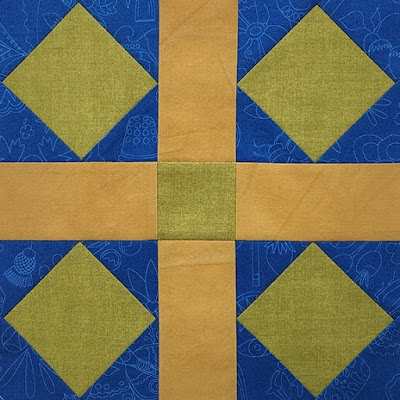Atlanta Garden #1: Garden of Eden by Dorry Emmer
Carrie Mabry Berry (1854-1921) was born in Atlanta, Georgia, August 3, 1854. As daughter of a well-to-do builder in a growing city surrounded by extended family she should have led a pleasant childhood but she was born the year of the Kansas/Nebraska Act, Senator Stephen Douglas's divisive political ploy to extend Southern slavery into the Western territories. By the time she was 7 the Civil War had begun.
The 1860 census taker found Harriet Key and Maxwell R. Berry with four children: Carrie M. the eldest at 5; Brother Carson M. (also called Charles) was a year younger. Mary Zuellette (Zulette) called Zuey was 2 and Fannie was 4 months old. Harriet Eliza had her hands full.
1860 Slave Schedule
That census also lists M.R. Berry as owning two unnamed Black girls 12 and 13 years old. Perhaps these young women acted as nursemaids or nannies to the house full of Berrys. A Southerner born in North Carolina, Maxwell Berry held several slaves in the antebellum years and actually was a dealer for a short while.
Unknown children
Although only a few years older than their charges, enslaved girls often spent their time looking after the children. Carrie kept a diary when she was older, mentioning two women who might be these girls: Mary and Tilo.
Library of Congress
27 residents photographed in an impressive Atlanta House. Family in
the middle porch, servants, free and enslaved in the top story. Their
Atlanta garden looks rather untended but this is a few years into the war.
The city of Atlanta was not much older than Carrie. Marthasville, as it was first called, was located in northwest Georgia on land taken from the Cherokee and Creeks, driven west in 1838. New railroads were incentive for expelling the natives as entrepreneurs looking for rail links from the Mississippi River to the Atlantic saw the site below the Blue Ridge mountains as perfect geography. While the frontier settlement grew in the mid 1840s a more sophisticated name was required and a railroad executive made up the word "Atlanta," a reference to the eastern terminus on the ocean.
Garden of Eden by Becky Collis
Reproduction prints
The 1860 census lists almost 10,000 residents of whom 3,000, a third of Atlantans, were African-American, most of them slaves.
This map with current locations in blue and Civil-War-era
locations in red is from the Civil War Picket BlogSpot/walking tour of Atlanta
When the war began the Berrys were living at Fairlee and Walton Streets, east of the tracks and the railroad yards, perhaps a little too close to the railroad for long-term safety.
Garden of Eden by Becky Brown
Sunflowers in the garden
Maxwell Rufus Berry (1823-1909) in his later years.
People called him Mack.
Maxwell Rufus Berry, born in Lincoln County, North Carolina, came to Georgia when he was an adolescent, working as a store clerk and then seeking his fortune in the gold mines of Alabama. Soon he was back in Georgia as an itinerant peddler selling clocks. In the 1850s he married Harriet Eliza Key, 7 years younger, and they moved to Atlanta. Over his life he is referred to as builder, contractor and real estate developer, partnering with Thomas Healey and Julius Hayden in Hayden, Healey & Berry, which lasted until 1883.
Carrie's diary and CDV photo are in the collection
of the Kenan Research Center, Atlanta History Center.
See links at the bottom of the page.
The portrait is post-war.
Adolph A. Hoehling in his 1958 book
Last Train from Atlanta, showed a hazy photo of the family's Atlanta yard about 1870. The garden looks rather formal.
Garden of Eden by Denniele Bohannon
"I went up to Aunties this morning to get her to tie Cousin Minnies brass pin. This eavning I got so tired of staying at home I went down at the store with Papa and he went down to Mr. Bookarts shop to get Mama's sewing machine. It has been raining and it is a bad day." December 18, 1865---The family was making brass pins for Christmas presents.
Carrie began her war diary when her father presented her with a blank book in 1864. We will refer to it monthly, viewing Atlanta's dark days through the eyes of a ten-year-old. She was a faithful recorder of her own small world but there was much she did not see. She had no idea that her father, his brothers-in-law (Aunties' husbands) and business partners were not loyal Confederates. Her family were secret Unionists, opposed to Secession before the war. During the war the Berry/Markham/Healy family was part of a group of perhaps three dozen families who refused to enlist in Georgia troops and conspired to limit their businesses' contributions to the war effort.
Exploding shell from the painting at Atlanta's Cyclorama
Carrie recorded the 1864 Siege of Atlanta in her diary. Her first entry:
"The shells we dread. One has busted under the dining room."
Fortunately everyone was up at Auntie's.
Jeanne Arnieri is using the "official set," alternating each block
with a simple nine patch.
Carrie's childhood in a warm, extended Atlanta family may have been a Garden of Eden until the war broke out but circumstances changed.
An Atlanta garden during the war with a "bomb-proof" cave
to protect the family from shelling. Carrie's father dug something similar
and the family spent many days and nights in in the cellar in the summer of 1864.
The Block
Addie's Block #1
Perhaps from 1910-1930?
December, 1933
Chicago Tribune
As always with Nancy---age is exaggerated.
The Kansas City Star showed garden paths
within garden paths and called it Economy
because pieces were so small.
Above the cutting instructions for 10" and 15" blocks.
You can choose one size or another.
As all the blocks are based on geometry of 5 x 5 we'll be making blocks gridded in multiples of 5. The central garden paths, the rectangular strips, in all the blocks will be the same, so if you're stitching 15" blocks you'll be cutting many strips 3-1/2" wide.
Rebecca Grace put a new binding on this vintage Garden of Eden from the mid-20th-century.
Further Reading
Read Carrie's diary from August 1864 till 1866 here:
The transcript:
Book for children with diary excerpts:
Jeanne is making two sets of blocks.


























3 comments:
Thanks so much for this new project Barbara. Your careful research always brings some amazing details to us. Stories from the garden incorporated into a quilt - what's not to like!
I'm not a quilter but I did very much enjoy reading your post and learning about Carrie Mabry Berry. Thanks for sharing the link to her diary. Really love the pattern and colors in the block made by Becky Brown.
Thank you for new information, and for a new CW BOM. I wasn't going to do it, because of health issues, but this one is easy enough, I think I will, and in 15", I should have enough for a throw quilt at the end. Thank you for your meticulous research. I always know there will be links, and what you share will be as accurate as anything we know about that period.
Post a Comment